Attractions in Kampala city
Attractions in Kampala city: Kampala city is the largest city in Uganda and the capital city of Uganda, Kampala is not just a city and a capital city of Uganda but a prominent tourist destination. Kampala city hosts many tourist attractions as listed below.
Uganda national museum
Uganda national museum is a historical site situated in Kampala along Kampala- kira route 3 kilometers from Kampala, Uganda museum is the oldest museum in east Africa established by the British protectorate government in 1908. Uganda national museum’s main building is a historical landmark which was designed by a German architect Ernst May, the Museum displays and exhibits ethnological natural- historical and traditional life of Uganda’s cultural heritage through its many galleries such as
Music gallery: The music gallery in the Uganda national Museum displays a collection of musical instruments from various regions of Uganda such as drums, percussion, wind and string instruments.
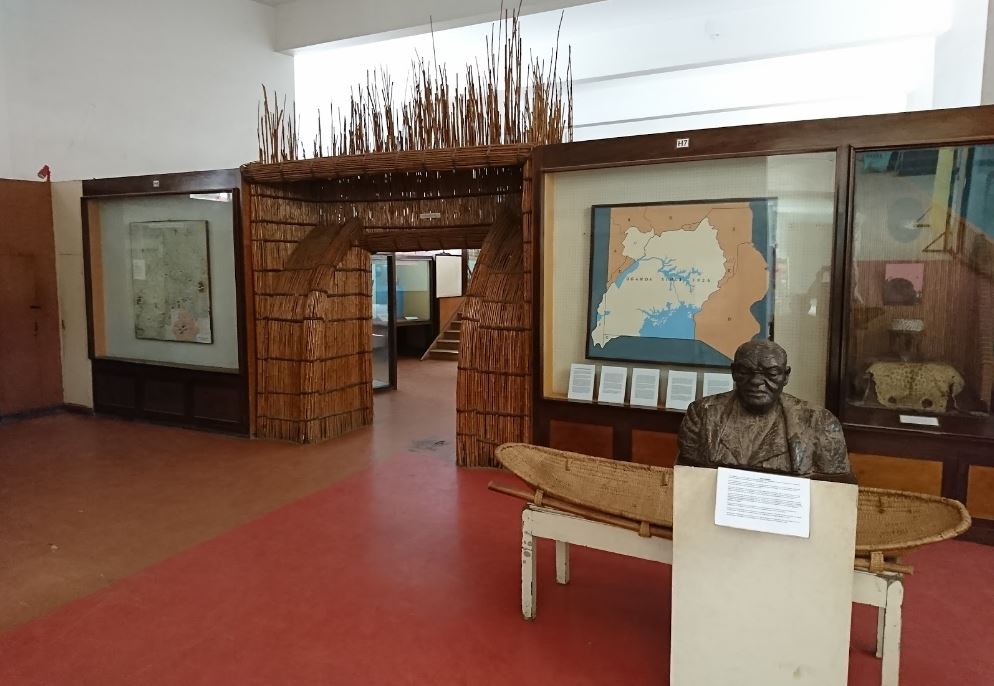
Ethnography gallery: this gallery showcases historical and cultural value, the gallery has a traditional reed doors which leads to a section which displays knowledge system, ceremonial practices, traditional dressing and health.
Cultural village: cultural village at Uganda national museum is situated in the back yard of the museum showcasing various cultural materials such as gourd vessels, basketry, bead work, horn work, ceramics, cutlery, leather works, armory, and musical instruments. The cultural village consists of houses belonging to numerous tribes in Uganda, these houses include Bamba house, Lango house, Acholi house, Bunyoro House, Madi house, Ankole House, Hima house, Alur house granary, Teso house, Tooro house, Kigezi house, Alur house, Busoga house, Karamoja house and Japadhola house.
Kasubi tombs
Kasubi tombs is architecturally impressive structure and a UNESCO site, Kasubi tombs are a cultural burial site for the kabakas of Buganda kingdom and prominent members of the royal family situated on Kasubi tombs 5 kilometers northwest of Kampala. Kasubi tombs structure was constructed in a dome shape using local materials like reeds, thatching grass and mud which makes it a unique work of art and it represent a high level of skills and knowledge of the Baganda people. The tombs sit on a vast land of 64 acres with an area where the tombs structure is situated and another used as farm land, originally the land on which the tomb hosted a royal palace for kabaka Ssuuna II and Kabaka Muteesa I palace which replaced the old palace of kabaka Ssuuna after his death.
Kasubi tombs is one the 31 royal tombs and burial sites for the kings of Buganda and it contains the remains of four kabakas of Buganda which include
- Muteesa I who ruled from 1835–1884
- Mwanga II who ruled the kingdom from 1867–1903 and died in exile on the Seychelles Islands
- Daudi Chwa II who ruled 1896–1939
- Sir Edward Muteesa II who ruled 1924–1969 and died in exile in London
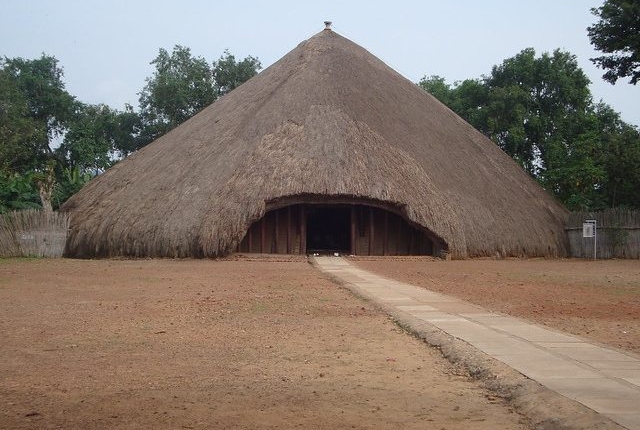
Bahai temple
Bahai temple is an attractive mother temple for the Bahai faith in Africa found on kikaaya hill in in north region of Kampala, Bahai temple is a unique architectural impressive structure 130 ft. high with a dome of 44 ft. in diameter. Bahai temple’s construction process began in 1958 and finished in 1961, the whole Bahai temple sits on a vast land of 52 acres. The structure is a worshiping place for the Bahai religion and one of its kind in Africa and the temple is a nine sided structure which represents oneness and unity of the believers of the faith.
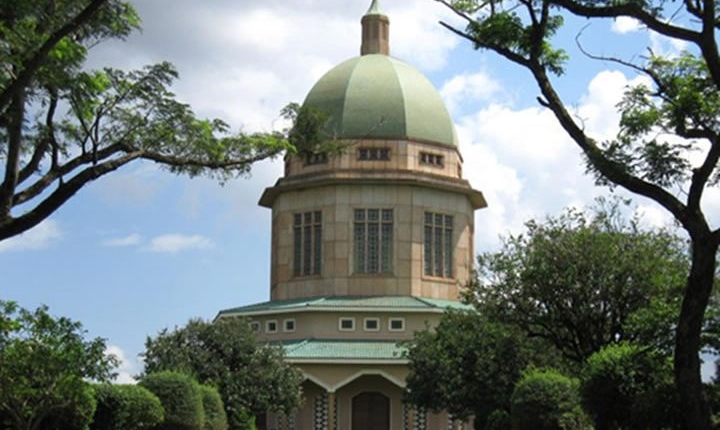
Uganda martyrs shrine
Uganda martyrs shrine is a very prominent structure situated in Namugongo town approximately 16 kilometers north east of Uganda, the shrine is a very significant to the Christian religion as it is a place where 32 young men who had just converted into Christianity where killed under the orders of kabaka Mwanga II the then leader of Buganda kingdom on 3rd June 1886. Among the killed young boys 22 belonged to the catholic religion and 23 belonged to the Anglican religion, the basilica of Uganda martyrs at the shrine a unique architectural structure and the main attraction at the site besides religion. The Basilica was built from 1968 – 1975, it was built with 22 copper pillar with an exquisite interior and outdoor décor which makes it attractive and appealing to tourists
Namugongo martyrs shrine is where martyrs celebrations are held on every 3rd of June every attracting a huge population of people from all over the world who come for both religious and touring purposes.
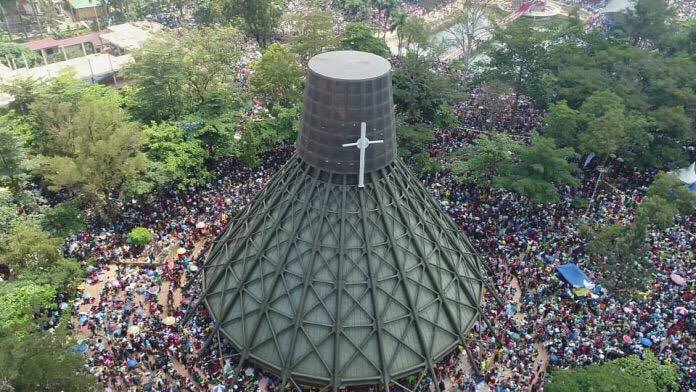
Rubaga cathedral
Rubaga cathedral also known as Saint Mary’s cathedral Rubaga, the cathedral is a prominent religious attraction belonging to a catholic affiliation. Rubaga cathedral is the parent cathedral for Roman Catholic Archdiocese of Kampala, the oldest Roman Catholic diocese in Uganda and a home to the church of Archbishop of Kampala. Rubaga cathedral is located on Lubaga hill one of the hills making up Kampala in the western region, the cathedral was constructed with an impressive architectural outlook which attracts many tourists to visit it. The cathedral is decorated with an impressive décor with roman pieces and religious pieces of Jesus Christ and mother Mary.
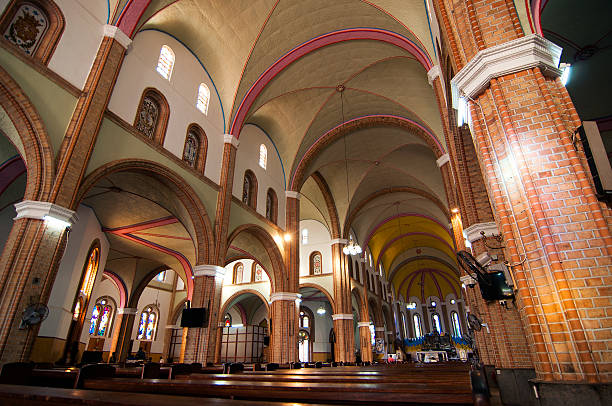
Namirembe cathedral
Namirembe cathedral also known as Saint Paul’s cathedral is a religious establishment belonging to protestant religion, the cathedral is the oldest cathedral in Uganda serving as the provincial cathedral of church of Uganda and the diocesan cathedral for Namirembe Diocese which is the first diocese to be founded in the church of Uganda province. Namirembe cathedral was constructed in 1919 and 1967, it is located on Namirembe hill in Lubaga division approximately 2 kilometers from Kampala city.
The cathedral building is an impressive architectural structure which makes it attractive and being situated on a hill its offers views of Kampala city and the neighboring areas.
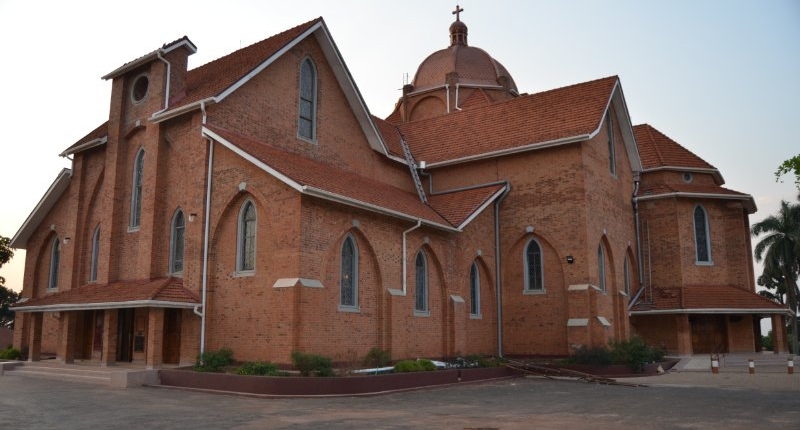
Gaddafi mosque
Gaddafi mosque currently known as Uganda national mosque belonging to the affiliation of the Islamic religion located on Kampala hill in a drive of 18 minutes’ drive from Kampala city, the mosque is a one of a kind structure and the biggest mosque in Uganda. Gadhafi mosque is a sky scrapper structure built on land of 12 acres, the mosque has exquisite exterior and interior décor and it consists of 5 domes and a minaret of 50 meters. From the top of the minaret of 304 stairs you get 360 degrees of Kampala city and all the hills making up Kampala district, the mosque houses the offices of the Supreme council on the lower floor of the mosque and the whole of the mosque accommodates 15000 believers in the main prayer area, 1100 believers in the gallery and 3500 on the terrace.
Gadhafi mosque/ Uganda national mosque’s construction was funded by the former president of Libya late colonel Muammar Gadhafi who also commemorated its opening by visiting Uganda.
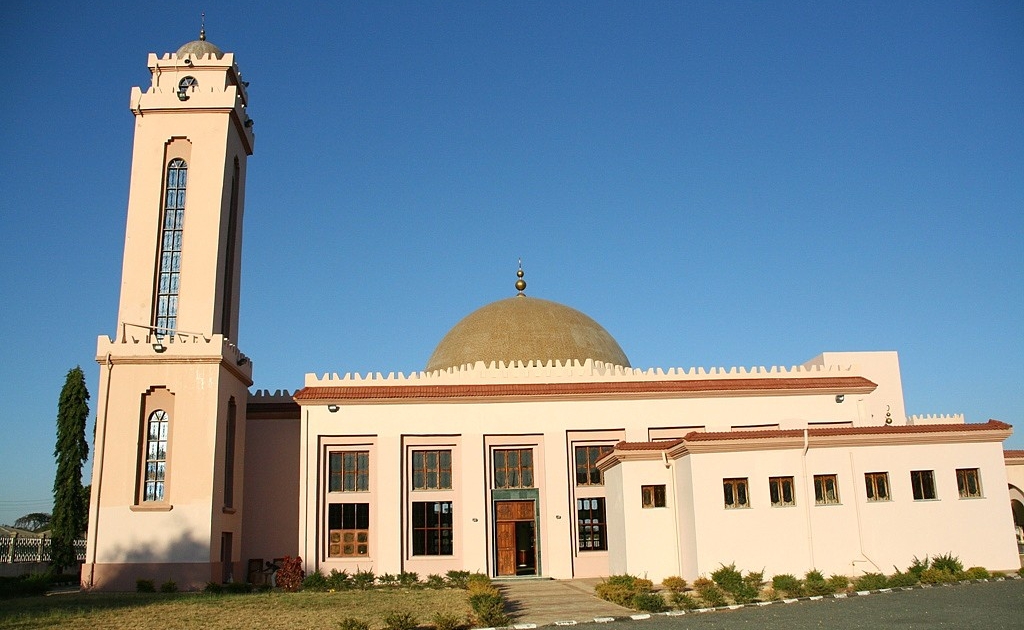
Independence monument
Independence monument of Uganda is apparently the most important and significant monument in Uganda, the monument is situated along Speke road opposite standard chartered bank and near Sheraton hotel’s gardens. This monument was laid to commemorate the independence of Uganda which was granted to her from it’s the British colonial leaders, the monument structure was built with a man unwrapping his child and raising it in the air which means a new born country freed from bondage of colonial rule.
Ndere cultural Centre
Ndere cultural centre is a home of culture in Kampala showcasing many cultures through many cultural performances which are performed on specific days, the centre was built on a nine acres of land of well-maintained beautiful flowers, green grass and many indigenous African trees. Ndere cultural centre offers cultural nights on Wednesday, Fridays and Sunday evening, while at the centre you get to witness many African instruments from the 56 tribes.
Kabaka’s Palace
Kabaka’s palace is situated in Mengo on Mengo hill, the palace is the official residence for the kabaka of Buganda. Kabaka’s palace is a unique work of art and the palace hosts a significant political historical of Uganda, it is has a torture execution chamber built in 1970 under the orders of the thenarmy commander Idi Amin Dada. Many people where tortured and killed from these chambers under the orders of the then president of Uganda Dr Milton obote .
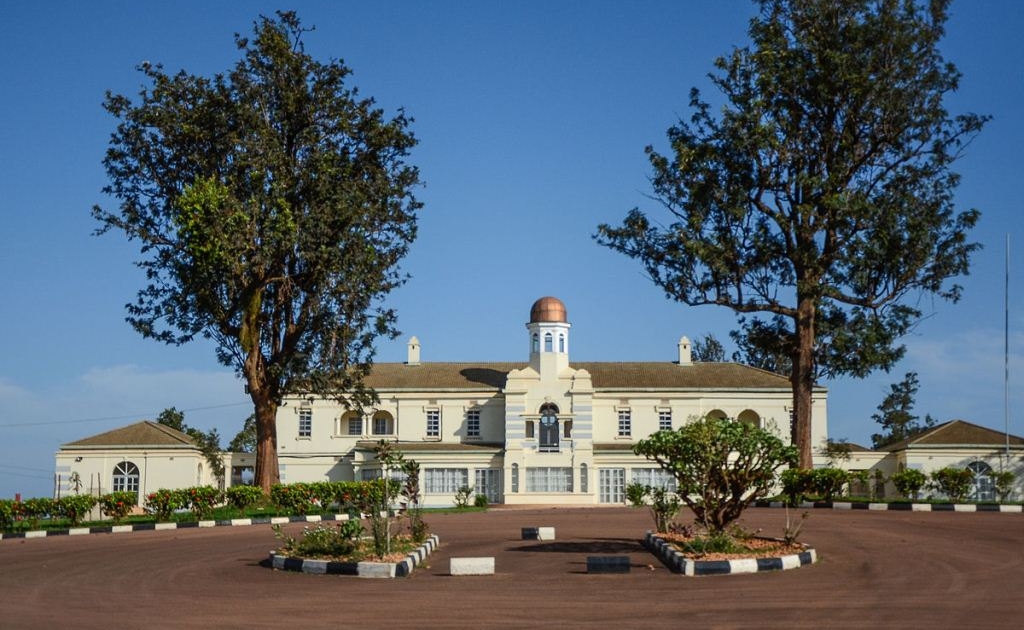
Kabaka’s Lake
Kabaka’s lake is a man-made lake one of its kind in and the longest surviving lake man-made lake in Africa, the lake is situated in Rubaga division in Ndeeba between the ring road and Nabunga road. The lake is of a great historical importance to the Buganda kingdom and Baganda people, the uniqueness of the lake attracts many people to witness the unique lake which has no water inflows. Kabaka’s lake was constructed under the orders of Kabaka Mwanga who ruled Buganda kingdom from 1884 to 1897, Kabaka Mwanga had a vision of constructed a water passage leading from his lubiri “palace” to his other palace in Munyonyo, unfortunately the process of constructing the lake stopped due to religious war.
Fort Lugard museum
Fort Lugard museum is situated at Old Kampala hill, the fort is a significant landmark showcasing the colonial era in Uganda under the rule of captain Lugard. Captain Lugard was a British soldier who arrived in Uganda in 1890s and the first governor of Uganda as a protectorate, upon his arrival he built his fort on the top of the hill.
Lugard’s fort was initially constructed at the place where Gadhafi mosque is located and during the construction of the mosque it was relocated to where it is right now in 2003.
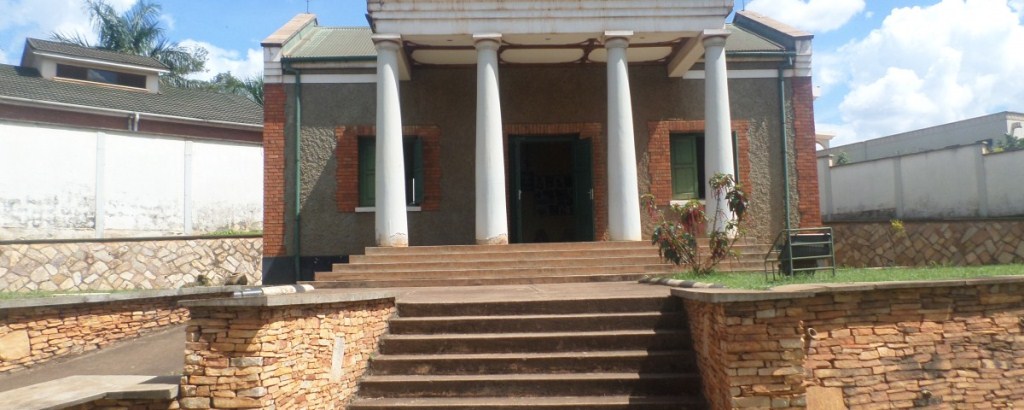
Owino market and Nakasero market
These markets are both situated in Kampala and they are prominent places where many products are sold and bought in Kampala, when you visit these places you will encounter many local people carrying out the trade and you can buy many unique items like hand-made crafts, fabrics and many more.

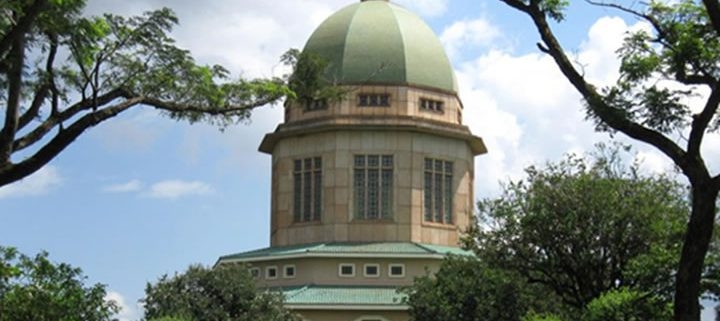



Leave a Reply
Want to join the discussion?Feel free to contribute!